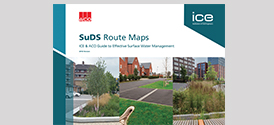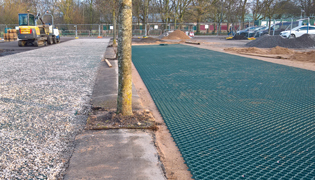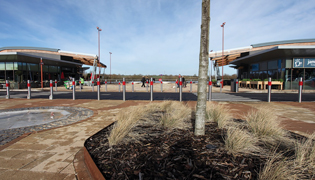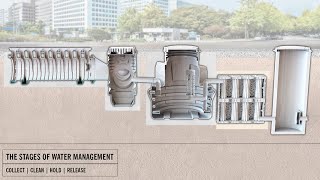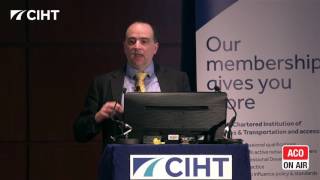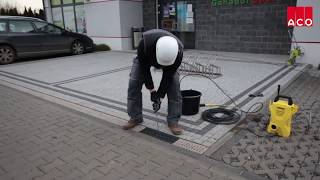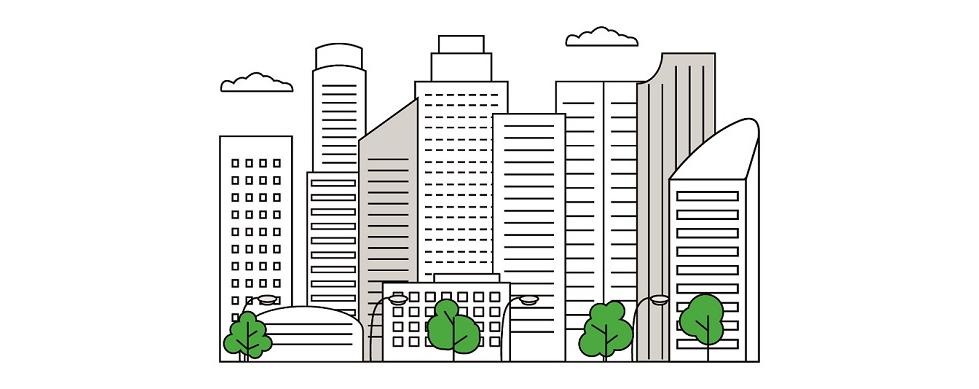
Professional Development for Public Health Engineers
Helping create knowledge champions
In today’s ever-changing construction design industry, it has never been more important to ensure you are up to date with current industry trends and new innovations. ACO recognises that there are many different elements that can play a part in the architectural and technical design of construction projects and drainage isn’t always easily recognisable as one that can add aesthetics to a scheme.
ACO has developed a series of Professional Development courses that provides essential learning and knowledge to Architects and other construction professionals that can be accessed in a number of ways, ensuring you can undertake professional development when and where you need it.
Continuous professional development is a commitment required by chartered bodies, in this sector, to develop your career and encourage lifelong learning. Dependant on your professional body or employer, this can be between 25-35 hours CPD per year, this could for example be split between personal technical knowledge and skills, job role technical knowledge and skills, and personal soft skills.
Levels of CPD
ACO have identified 3 levels of CPD in line with leading Construction Institution guidance. These levels assist you and ACO to select the educational program required for your professional development. For a full description please contact us.
Level 1 – Basic knowledge and understanding
Level 2 – Application of knowledge to a subject
Level 3 – Reasoned advice, depth and synthesis of technical knowledge and its implementation
Urban Surface Design
Level 1
Description
The presentation explores the history of surface water management and how it has evolved into a requirement for construction projects, leading on to look at the future and how SuDS is becoming a statutory requirement.
We look at new standards that will govern Surface Water Management Systems and how these will affect architectural practices and the implementation of SuDS.
The presentation moves on to demonstrate how innovative drainage design can be used to integrate and enhance the aesthetic of a project and still be practical and functional. Looking at external drainage designs and how these areas can tie into SuDS including Green/ Blue roof solutions, planters and tree pits.
Case studies are used throughout the presentation, demonstrating how ACO contributes directly to design outcomes through expert knowledge.
Learning outcomes
• Learn about the origins and evolution of surface water management
• Understand legislation and guidance for local planning authority approval
• The basic principles of SuDS and drainage design
• Where to use channels to break up and enhance different surface finishes
• How drainage can be hidden from site to create seamless hardscaped areas
• To connect with green SuDS and enhance the natural environment creating green space
EFFECTIVE SURFACE WATER MANAGEMENT
Level 1
Description
To help architects, designers and contractors meet legal requirements that now tightly control the way surface water is managed, ACO has created its unique ‘Surface Water Management Cycle’ – Collect, Clean, Hold, Release – the four core processes now required for the complete and sustainable management of surface water drainage with a balance of proprietary products and SuDS features.
We focus on why we need surface water drainage; how to select an appropriate system from the perspective of design, materials, environmental impact, loading, aesthetics and the legislation used to ensure that the manufactured product is of the highest standard.
Looking at where it goes following its collection from the surface i.e. the natural environment or a combined sewer. How we treat this collected rainwater using oil, heavy metal separators and what level of treatment is required based on the SuDS mitigation Indices set out in The SuDS Manual (C753).
Volume and rate of runoff are a consequence of a changing climate. How we manage this volume using soft SuDS and underground storage in an economic way, creates resilience systems. Though, making sure the system is future proof in terms of inspection and maintenance is desirable and evaluated. The rate we release storm water into the environment and how flow controllers can assist in alleviating scour, wash out, bank erosion and cut down on excess storage on the site is the final subject.
Learning outcomes
• Understand the basic requirement for surface water management
• Learn how ACO approaches each element of Collect, Clean, Hold & Release
• Where to get access to applicable standards and guidance
• Understand load classes as per BS EN 1433 and the certification process
• The application of surface water management products in a variety of scenarios
• Understand the principals of separation devices
• Learn the basics of The SuDS Manuals (C753) Mitigation Indices and Connecting to SuDS features
• How to specify underground attenuation for loading and maintenance
• Understand how Controlling the flow rate can lower the need for attenuation
Practical and Sustainable Surface Water Management
Level 3
Description
This presentation focuses on the future of surface water management, where climate change, urbanisation, population growth and water scarcity are the key drivers for change and underline the importance of SuDS.
We look at the desirable attributes of SuDS in the form of infiltration, evaporation and evapotranspiration and, why maintenance is a crucial factor to consider when implementing a SuDS feature.
For any design, there are three ideal solution attributes; economic construction, the concept of ‘resilience’ in design and sustainability. Delivering these attributes is a challenge that all designers face and will be vital to maintaining a competitive advantage as the industry evolves.
We consider managing runoff, using both soft and hard solutions to deliver an optimised scheme, taking advantage of site topography and features of the local environment.
As members and sponsors of the new CIRIA Suds manual (C753), we explore how to instigate design features that enable compliance with Government guidance while delivering value-added benefits to the client and community.
Learning outcomes
• Learn the history, evolution and drivers of SuDS
• Understand the fundamental principles of a SuDS design
• Where to access legislation and guidance in the field of SuDS design
• Understand the balance between economics, resilience and sustainability
• Learn about government standards for water quantity
• How The SuDS Manual (C753) designs for rate and volume control
• Learn about rate management and interception losses using surface storage and green SuDS
• Understand pollution levels and the important of molecule sizing
• How to design treatment trains using The SuDS Manual Mitigation Indices

ACO has recognised that knowledge transfer is fundamental in keeping up-to-date with these latest advancements in the management of water as well as fats, oils and grease and has unique professional development and training offers for industry professionals. These can be accessed in a number of different ways to suit your learning requirements; online, in-company, or at the state of the art training facility at ACO UK headquarters.
The extensive range of professional development material we offer is constantly updated and refreshed. Availability of certain programmes fluctuates according to demand. For both these reasons we recommend you register your interest by providing a few details in order for us to be able to keep you up to date.
All the information you enter is held only by ACO and not shared; the information will only be used to update you about our Professional Development services and materials. You can unsubscribe at any time should you no longer require this service.
